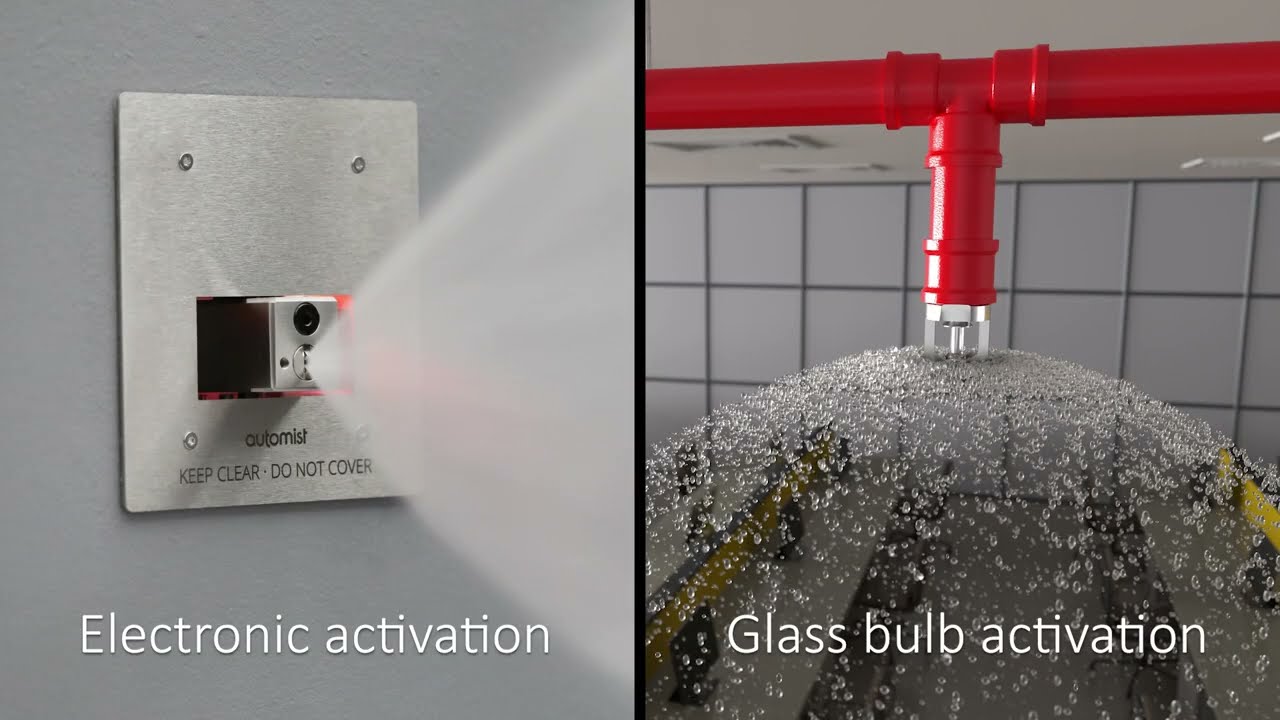Can the risk of an ‘inner room’ on the first floor of two-storey small paying guest accommodation be reduced with Automist?
Yes, Automist can often be retrofitted to small paying-guest-accommodation to help provide an alternative way of keeping people safe if your property has inner rooms on the first floor, and where the means of escape was reliant on escape windows. The Fire Safety Order does not prescribe the specific fire safety measures required. What it does require is that you must identify and manage the overall risk and provide fire safety measures that are appropriate for the risk. NF19 and independent fire engineering research highlight the historical practice of applying performance-based analysis to support inner room situations can be considered acceptable with the provision of a suppression system, depending on the exact arrangement of the dwelling.
Further information:
The fire safety requirement
Small premises have simple layouts, limited fire risks and a small number of bedrooms designated as guest sleeping accommodation for short-term lets, such as small bed and breakfasts, guest houses and self-catering accommodation. Section 156 of the Building Safety Act 2022 (BSA) has made amendments to the Regulatory Reform (Fire Safety) Order 2005 (FSO), which will see the enforcement of new fire safety guidance on October 1st, 2023, to all buildings which are regulated by the FSO. The Regulatory Reform (Fire Safety) Order 2005 (“the Fire Safety Order”) is the main legislation that controls fire safety in all premises in England that provide accommodation for paying guests. The Fire Safety Order applies if anyone pays to stay in your premises or in a room within your premises, other than to live there permanently. The Fire Safety Order applies to all lets that are not let as a principal residence, even if you rent out a room in your premises only once. For Responsible Persons, it is integral that they ensure that they are compliant, as the new phase 3 makes it easier for enforcement authorities to take action against non-compliance.
Inner rooms
A room where the only escape route is through another room is termed an ‘inner room’. The occupants of an inner room could be at risk if a fire starts in the outer room (often referred to as an ‘access room’). Inner rooms should not be used for any form of sleeping accommodation unless the rooms are on the ground floor and the rooms have direct access to a door or “escape window” that can be used by the occupants to reach a place of safety clear of the accommodation. Escape windows on the ground floor can only be considered acceptable if they are easily accessed and provide a clear opening of sufficient size to allow able-bodied persons to escape in the event of a fire in the access room. Mobility-impaired people should not be accommodated in rooms where the means of escape is reliant on escape windows. The use of escape windows for rooms on the first floor is not considered a safe means of escape for paying guests, as they are likely to be unfamiliar with the layout of the property. If your property has inner rooms on the first floor, used by paying guests, and you cannot reasonably change the use of these rooms, you should seek further advice and guidance from a competent fire safety professional to consider a range of additional fire safety measures that might provide an alternative way of keeping people safe.
Download - A guide to making your small paying-guest-accommodation safe from fire
The acceptance of this approach will be dependent on the additional measures and the additional measures being acceptable to the Enforcing Authority, the Fire and Rescue Service (FRS). It should be noted here that not all FRS think the same and what may be accepted in one FRS area may not be accepted in another, so consultation with your own FRS is essential.
Active Water Fire Suppression Systems (AWFSS)
NF19 and fire engineering research highlight the historical practice of applying performance-based analysis to support inner room situations can be considered acceptable with the provision of a suppression system, depending on the exact arrangement of the dwelling. The primary intention and performance objectives for including Automist within dwellings (i.e. to support open plan arrangements) is to aid the escape of the dwelling’s inhabitants. Upon activation, the Automist will introduce water spray into the fire-affected enclosure and will suppress the fire by a combination of wetting and cooling the combustion surface (and any surrounding surfaces), cooling the air by vaporisation (energy absorption) and diluting the air with water vapour. The suppression of the fire will reduce its HRR, reduce the enclosure temperatures, and minimise the likelihood of further fire spread within the fire-affected enclosure. In some instances, Automist will extinguish the fire entirely, although it is important to note that this is not an expectation of the system and is not an explicit test criterion in BS 8458:2015. By reducing the HRR and the likelihood of subsequent fire spread, the suppression system is also likely to reduce the production of soot and toxic gases, as these are typically proportional to the size of the fire (expressed proportionally to the mass flow rate as ‘yields’). The suppression system will operate for a sufficient length of time (30 minutes) that it appropriately mitigates the hazard for any escaping occupants. Automatic fire detection and alarm can be provided within the dwelling to warn occupants of a potential hazard, such that they are able to make their escape earlier within the fire’s development when the hazard is comparatively less severe. The combination of the above factors means that the conditions within the fire-affected enclosure would be expected to be less hazardous to escaping occupants (in terms of heat, visibility, and toxicity) than an enclosure not afforded an Automist system. Similarly, the extent of smoke and heat spread both within and beyond the enclosure would be expected to be comparatively less. As a result, the severity of the hazard faced by the fire service would typically be less than in a dwelling not provided with an Automist system.
Why Automist is ideal for this situation?
- Early activation - Fire engineering research shows Automist can operate 2 to 14 times quicker than a concealed sprinkler. Electronic activation helps to extend ASET by limiting smoke production from fire and by reducing heat exposure.
- Ease of retrofit - Automist can be installed or retrofitted with minimal disruption to the fabric of the building, as spray heads are wall-mounted and connected using flexible hoses.
- Minimal demand on the water supply - Connecting to the normal domestic water supply, there’s no need for a tank or water main upgrade, so it's cost-effective to retrofit and practical where water supply or pressure is an issue.
- Track record of retrofit compatibility even with challenging heritage properties - Review some case studies which include most notably West Horsley Place whereby remote monitoring was added so that when any pump is activated it will alert a Red Care monitoring system. A tailored aftercare package for the system was also developed to ensure the integrity of the system could be simply managed following installation.
Read more - Are there any fire engineers familiar with Automist?
Reviewed: 04/07/2023. Our articles are reviewed regularly. However, any changes made to standards or legislation following the review date will not have been considered. Please note that we provide abridged, easy-to-understand guidance. To make detailed decisions about your fire safety provisions, you might require further advice or need to consult the full standards and legislation. It should be noted that there may be specific additional requirements dependent upon local authority building regulations and/or fire authority. There is a range of fire safety measures possible in individual premises. As the person responsible for fire safety in your premises, you will need to use your judgement to decide what needs to be done to minimise risk. Nothing within this article should be deemed to overrule the Small Paying Guest Accommodation Guide or requirements of the FSO, and the author accepts no responsibility or liability for actions taken against businesses or responsible persons by reliance on the information in this article. This includes whether or not advice has been sought from the relevant authorities, such as local Fire and Rescue Services, Building Control Bodies and Planning Authorities. Responsible persons are therefore recommended to refer to the Small Paying Guest Accommodation Guide and seek consent from relevant authorities before embarking on any project.


